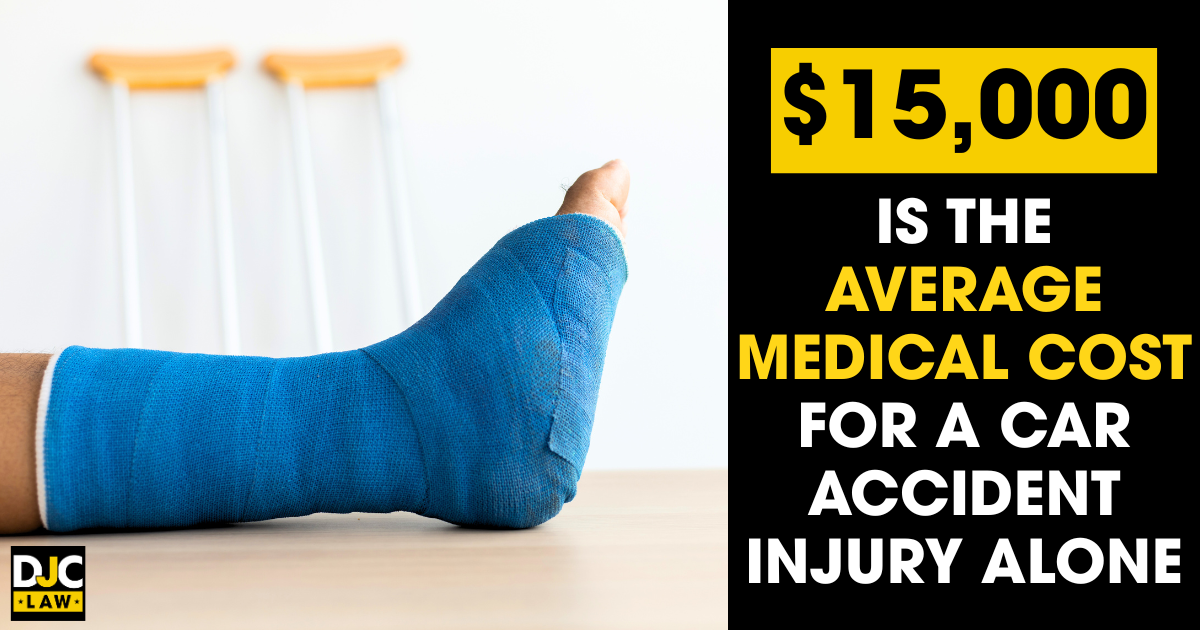
Your next step after a car accident is making an insurance claim, but where you make this claim depends on whether you live in a no-fault or at-fault state. These designations determine how auto insurance claims are handled, and the difference will impact where you claim and what you must do to receive a fair settlement.
According to a YouGov poll, 50% of American drivers have made an insurance claim at some point in their lives. With Consumer Shield reporting 4.2 auto collision claims per 100 drivers in 2021, the chances are high you’ll have to go through the process at some point.
Understanding whether you live in an at-fault or no-fault state, and what that means, is critical to getting the maximum compensation. Consulting an experienced Austin car accident lawyer can also help you navigate these distinctions and secure a fair outcome. Here’s what you must know about the distinction and what it means for your claim.

Key Takeaways
- The U.S. doesn’t have a standardized auto insurance claims system, with each state being able to decide for itself which legal framework it wants to operate under.
- At-fault states, known as tort states, put the responsibility of covering all damages on the party responsible for the accident. These states allow for more flexibility and have lower average premiums.
- No-fault states remove fault determination from the equation, with drivers able to claim damages via their own insurance companies regardless of who’s to blame. Although Personal Injury Protection (PIP) is mandatory, you can guarantee that your damages will be covered even if an accident is your fault.
- Three choice states exist in the U.S., which allow drivers to choose whether to hold an at-fault or no-fault policy.
- The difference between these systems impacts how you make a claim, whether you have the right to sue, and how long the claims process takes.
- In all states, hiring a lawyer after an accident is strongly recommended for advice and guidance on protecting your legal rights and maximizing the amount of compensation you’re entitled to.
Characteristics of Fault Insurance Systems
Fault insurance systems, known as at-fault states, decide who’s responsible for paying damages by looking at who’s responsible for an accident. It places the responsibility of funding settlements on the at-fault party.
Within these systems, investigations to determine fault are carried out after every accident. Claims are filed against the at-fault party’s insurer, rather than their own, to receive full compensation for all associated economic and non-economic damages. If the at-fault party doesn’t have insurance or a policy with a high enough limit, accident victims can file personal injury lawsuits against them personally.
Most U.S. states operate under this system, including Texas. Proponents believe it encourages safe driving by holding people to account for their actions.
Characteristics of No-Fault Insurance Systems
No-fault insurance systems ignore the issue of liability for insurance purposes. Instead, drivers file claims with their insurance companies, paying for all injury-related expenses. The goal is to simplify claims and reduce the amount of litigation related to auto accidents.
All drivers in these states are required to carry certain types of insurance coverage, including Personal Injury Protection (PIP), which covers medical expenses and lost income. There are also limitations on your right to sue. Typically, suing a driver only happens if accidents exceed a certain severity threshold.
Of course, no-fault systems come at a cost. Insurers know every accident means a payout, so they compensate for this by raising premiums. Since there’s a much bigger scope of mandatory coverage enshrined in law, it means insurers typically have much higher outgoings in these states.
State-by-State Breakdown of Insurance Laws
Every state has the right to decide on its own approaches to auto insurance, meaning there’s a patchwork of different laws making up the whole country. That can create complexity because many drivers might be unaware of the system they’re operating under, especially if they’ve moved to a new state.
According to ConsumerAffairs, over 283 million cars are registered in the U.S., which means millions of drivers prepare to make insurance claims every year. Here’s a breakdown of insurance laws by state.
| State | Insurance Laws |
|---|---|
| Alabama | Fault Insurance Laws |
| Alaska | Fault Insurance Laws |
| Arizona | Fault Insurance Laws |
| Arkansas | Fault Insurance Laws |
| California | Fault Insurance Laws |
| Colorado | Fault Insurance Laws |
| Connecticut | Fault Insurance Laws |
| Delaware | Fault Insurance Laws |
| Florida | No-Fault Insurance Laws |
| Georgia | Fault Insurance Laws |
| Hawaii | No-Fault Insurance Laws |
| Idaho | Fault Insurance Laws |
| Illinois | Fault Insurance Laws |
| Indiana | Fault Insurance Laws |
| Iowa | Fault Insurance Laws |
| Kansas | No-Fault Insurance Laws |
| Kentucky | Choice No-Fault Insurance |
| Louisiana | Fault Insurance Laws |
| Maine | Fault Insurance Laws |
| Maryland | Fault Insurance Laws |
| Massachusetts | No-Fault Insurance Laws |
| Michigan | No-Fault Insurance Laws |
| Minnesota | No-Fault Insurance Laws |
| Mississippi | Fault Insurance Laws |
| Missouri | Fault Insurance Laws |
| Montana | Fault Insurance Laws |
| Nebraska | Fault Insurance Laws |
| Nevada | Fault Insurance Laws |
| New Hampshire | Fault Insurance Laws |
| New Jersey | Choice No-Fault Insurance |
| New Mexico | Fault Insurance Laws |
| New York | No-Fault Insurance Laws |
| North Carolina | Fault Insurance Laws |
| North Dakota | No-Fault Insurance Laws |
| Ohio | Fault Insurance Laws |
| Oklahoma | Fault Insurance Laws |
| Oregon | Fault Insurance Laws |
| Pennsylvania | Choice No-Fault Insurance |
| Rhode Island | Fault Insurance Laws |
| South Carolina | Fault Insurance Laws |
| South Dakota | Fault Insurance Laws |
| Tennessee | Fault Insurance Laws |
| Texas | Fault Insurance Laws |
| Utah | No-Fault Insurance Laws |
| Vermont | Fault Insurance Laws |
| Virginia | Fault Insurance Laws |
| Washington | Fault Insurance Laws |
| West Virginia | Fault Insurance Laws |
| Wisconsin | Fault Insurance Laws |
| Wyoming | Fault Insurance Laws |
Overview of States with Fault Insurance Laws
Most states operate under a fault-based system, otherwise known as a tort liability system. These are known as pure fault states and don’t cover the states, such as Pennsylvania and Kentucky, where there are optional no-fault or choice no-fault insurance coverage options.
- Alabama
- Alaska
- Arizona
- Arkansas
- California
- Colorado
- Connecticut
- Delaware
- Georgia
- Idaho
- Illinois
- Indiana
- Iowa
- Louisiana
- Maine
- Maryland
- Mississippi
- Missouri
- Montana
- Nebraska
- Nevada
- New Hampshire
- New Mexico
- North Carolina
- Ohio
- Oklahoma
- Oregon
- Rhode Island
- South Carolina
- South Dakota
- Tennessee
- Texas
- Vermont
- Virginia
- Washington
- West Virginia
- Wisconsin
- Wyoming
Overview of States With No-Fault Insurance Laws
In contrast, there are just nine pure no-fault states. In these states, you must purchase a minimum insurance coverage, including PIP coverage, to cover your expenses. If you’re involved in an accident, the need to prove fault is irrelevant here for insurance purposes because you’ll claim via your own insurance provider.
Here are the states operating under a pure no-fault system:
- Florida
- Hawaii
- Kansas
- Massachusetts
- Michigan
- Minnesota
- New York
- North Dakota
- Utah
Choice No-Fault Insurance States Explained
Three choice no-fault insurance states exist. These states are an amalgamation of the two at-fault and no-fault systems because drivers may choose between the two when taking out their policies. It gives drivers more flexibility by allowing them to choose which system they operate under.
Typically, if you’re on a no-fault car insurance plan, you’ll be subject to a damage threshold, where you’ll only be able to sue if your damages exceed this threshold.
The three choice no-fault states are:
- Kentucky
- New Jersey
- Pennsylvania
The Role of Personal Injury Protection (PIP) in No-Fault States
PIP protection is the cornerstone of the insurance system in no-fault states and an optional form of coverage in at-fault states. Holding this coverage allows you to receive compensation for your medical costs and other related expenses, regardless of who’s at fault.
Supporters of this system claim that it reduces the amount of litigation and speeds up claims processing, while providing safety nets for all drivers following a crash.
What PIP Covers and Its Importance

PIP covers an enormous amount of your crash-related expenses. According to the National Highway Traffic Safety Administration (NHTSA), the average medical cost for a car accident injury is $15,000 alone. Your PIP protection will cover that in full from the beginning.
Let’s examine the full range of costs covered by PIP:
- Medical Bills – Costs include ambulances, surgeries, prescriptions, rehabilitation, and hospital stays.
- Lost Wages – Every shift you don’t make due to your injuries can be reimbursed via your PIP coverage.
- Critical Services – You can also pay for help with the things you can’t do while you’re injured. For example, PIP will cover childcare and housekeeping costs when you cannot do these things yourself.
- Funeral Expenses – If you pass away because of your injuries, PIP coverage will kick in to cover your funeral and burial/cremation costs.
Additionally, PIP will often cover passengers inside your vehicle. Essentially, PIP coverage is assigned to the vehicle operated by the registered driver, rather than just the policyholder themselves.
PIP can’t stop the trauma of an accident, but it can free you from the burden of dealing with six-figure bills when all costs are taken into account. It’s saved millions of families over the years from immense financial strain and hardship, while also preventing court systems from becoming clogged by a slew of low-value personal injury lawsuits.
Variations in PIP Requirements Across States
All no-fault states make PIP coverage (or similar types) mandatory. However, that doesn’t mean all the no-fault states operate in lockstep regarding the amount of coverage required. And that’s where there can be significant differences in how these systems function.
Let’s take three examples:
- New York – The New York government website mandates that drivers need $25,000 in bodily injury liability, $50,000 in death coverage for each person, and $50,000 in PIP coverage.
- Florida – The Florida state government website states that the Sunshine State only requires $10,000 in PIP coverage. Still, PIP cover also extends to any injuries you sustain if you’re cycling or walking along the street as a pedestrian.
- Michigan – Michigan requires $50,000 in PIP coverage, but you can also purchase unlimited PIP coverage, or high-value options, like $250,000 or $500,000, per the State of Michigan website. You can even coordinate with your health insurance to lower your premiums.
The fact is that most no-fault states have minimum PIP coverage amounts that won’t cover anything more than minor to moderate car accidents. If your costs are much greater, you may gain the right to file a personal injury lawsuit against the other party via an experienced car accident attorney.
Another example is the Massachusetts no-fault system. Under these no-fault laws, you can sue another driver if your expenses exceed $2,000, which allows all injured parties involved to sue, just like under an at-fault system.
Understanding Insurance Claim Processes in Different States
The claims process also differs depending on which system your state operates under. Each system will change how you make a claim, what the process looks like, and how long it will take.
Each system will have its own pros and cons, with plenty of supporters and critics. Note that the claims process in the three choice states will resemble whichever system a driver has elected to fall under.
Claim Processes in No-Fault States
In no-fault states, you’ll file a claim with your own insurance provider no matter who caused the car crash. During the claims process, you’ll be asked to provide documentation of your losses, such as medical bills, wage loss, and other expenses covered under your PIP insurance policy.
Your insurer will examine this paperwork and compensate you directly from its own pockets. Of course, this also means you can’t sue the other driver for their role in the accident without meeting a certain threshold. This threshold depends entirely on the state in question. Some states allow you to sue if you’ve suffered severe injuries, whereas others decide based on your medical costs.
The advantages of this claims process are that payouts are much faster and there are far fewer disputes between parties. Typically, the only time litigation steps up to the plate is in the most serious accidents.
Claims Processes in At-Fault States
In at-fault insurance states, also known as tort states, you’ll file a claim for compensation with the other driver’s insurance company for your injuries and losses. The insurance company will then investigate your claim for damages, performing an in-depth investigation of the accident scene and the circumstances leading up to the collision.
After supplying all relevant documentation and evidence, the next step is negotiating a settlement with the insurer. Typically, this can take weeks or even months, especially if liability has been disputed or multiple parties are in play. Insurers will do everything possible to shift the blame and protect their bottom lines.
Of course, the advantage is that you’ve got full access to compensation for economic and non-economic damages. Additionally, no restrictions exist on filing lawsuits in at-fault states like Texas. The downside is that every significant claim usually means hiring a personal injury attorney and spending months dealing with insurers and the legal system.
How to Navigate Claims in Choice No-Fault States
The states of Kentucky, New Jersey, and Pennsylvania allow you to elect whether you’ll be protected under a no-fault or an at-fault policy. Despite the complexities, it’s actually quite simple. The claims process follows the system you’ve elected to be protected under.
For example, if you’ve decided on no-fault coverage, all claims go through your own insurance company first. In contrast, if you’ve opted for an at-fault type of auto insurance coverage, you’ll lodge a claim against the negligent driver’s insurance company to recover compensation for medical bills, lost wages, property damage, and more.
Legal Implications of Fault vs. No-Fault Insurance
The insurance system your state operates under has enormous legal implications that extend beyond how claims are made. Your system determines when you can sue and the impact of fault on how much compensation you receive.
Understanding the legal distinction between at-fault vs. no-fault is crucial for ensuring you get the accident claim outcome you hope for.
Thresholds for Lawsuits in No-Fault States
In no-fault states, you’ll rarely have the opportunity to file a personal injury lawsuit against an at-fault driver. Instead, the ability to litigate is the exception, not the rule. Of course, every no-fault state understands that there are scenarios where accident victims should be able to sue, and they impose limits to decide this.
The two thresholds that no-fault states utilize are:
- Monetary – States using a monetary threshold require your medical expenses to exceed a specific amount before you can file a lawsuit.
- Severity Threshold – In other states, there’s a severity threshold that you must pass before you’ll receive the right to sue. Typically, this means you’ll need to have sustained severe injuries, such as a permanent disability, disfigurement, or death.
For example, New York only allows a driver to sue another if an accident resulted in severe disfigurement, life-changing medical conditions, or death.
How Fault Affects Compensation in At-Fault States
Compensation will often depend on the amount of fault you assume in at-fault states. Every state differs on what the degree of fault means for your settlement package and whether you can receive any compensation at all.
Many at-fault states use the modified comparative negligence system, meaning that any settlement will be reduced by the percentage of the responsibility you assume for an accident. For example, Texas uses at-fault insurance laws like the 51% bar rule, where if you’re 51% or more responsible for an accident, you’re banned from receiving any compensation at all.
So, what does this look like in practice?
Suppose that you’re found to be 30% responsible for your accident because you were texting and driving at the time. If you were awarded a $250,000 settlement in Texas, you’d only receive $175,000 because you’d lose the 30% that represents your contribution to the accident.
It’s why, if you live in an at-fault state, it’s a common tactic employed by insurers to try to shift some of the blame. It’s also why hiring an experienced personal injury lawyer in these states is basically non-negotiable if you want to maximize your compensation.
Comparative Analysis: Fault vs. No-Fault Insurance
Fault and no-fault systems aren’t just about how you make a personal injury claim or your ability to sue. The ripple effect impacts everything from the benefits drivers have to how much they pay for coverage.
For example, Mercury Insurance found that premiums are generally 25% higher in no-fault states compared to at-fault states. Of course, there are caveats to this because many at-fault states like Texas require nothing more than a small amount of liability insurance, which many drivers opt for, thus driving the average down.
Let’s compare these two systems.
Implications for Drivers in No-Fault States
- Higher minimum coverage requirements.
- Faster claims payouts
- Serious injuries usually mean filing lawsuits to pursue extra compensation.
- Higher premiums due to more extensive coverage requirements.
- Fewer liability disputes.
Some states, like Michigan, also offer tiered insurance options, allowing drivers to pay higher premiums in exchange for more coverage.
Implications for Drivers in At-Fault States
- Lower minimum insurance requirements.
- All drivers have the right to pursue full damages via insurance claims and lawsuits.
- Drivers face significant financial strain if their insurance thresholds are too low.
- Premiums vary massively based on coverage requirements and your driving record.
- More flexibility to customize your policy according to the type of coverage you want.
- High-risk drivers face substantially sharper premium increases.
The Importance of Understanding Your State’s Insurance System
Most people only begin understanding their state’s insurance system after they get into an accident. Unfortunately, this is the worst time to begin learning about how your insurance system works because it can lead to delays in your claim and missteps that could jeopardize your settlement.
Understanding these laws impacts everything, including:
- How you file
- Where you file
- Coverage needed
- Coverage limitations
- Ability to sue
- How much you pay out of pocket
All of these things impact you whether you’ve sustained minor injuries or you’ve suffered catastrophic injuries. Take the time to grasp the facts about your state’s insurance system to prepare yourself not only in case you get into an accident but also so you can purchase the correct coverage for you and your family.
Consulting With Legal Experts for Your Insurance Needs
Insurance laws are complex, and intricacies within each state’s system can confuse and cost you thousands of dollars. Even in no-fault states where you won’t be able to sue in most circumstances, seeking legal advice is a prudent way of knowing where you stand and finding out how to proceed next.
In an at-fault state, hiring a legal professional should be one of the first things you do after your accident. Fault matters and ensuring that your legal rights are protected, and at-fault parties are appropriately held to account.
Conclusion: Navigating Insurance Laws and Coverage
Dealing with different insurance laws is challenging because every state operates under its own model and can further change that model. If you want faster claims resolution and fair compensation, the answer is to seek legal representation if you’re involved in a car accident, regardless of where you live.
At DJC Law, we support the people of Texas in pursuing compensation and guaranteeing that they get the best possible settlement. With over $400 million in settlement money won, we’re the number one car accident law firm in Austin, Texas. Contact us today for your free consultation.
Frequently Asked Questions on Insurance Laws by State
What happens after an accident in a no-fault state?
After an accident in a no-fault state, each driver files an accident claim with their own insurance company. Fault is irrelevant because you’ll claim against your own PIP provider, which covers your medical costs, lost wages, and other stated expenses.
How do you choose between fault and no-fault insurance?
Residents of the three choice states of Kentucky, New Jersey, and Pennsylvania may choose what insurance policy they want. At-fault policies offer more flexibility, a greater right to sue, and lower premiums. In contrast, no-fault insurance guarantees that your losses will be covered even when you are at fault.
Can you sue for damages in no-fault states?
Yes, you can sue for damages in no-fault states, but only under specific circumstances. States either use a monetary threshold, where your medical bills must exceed a specific dollar amount, or a severity threshold, where your injuries must be severe enough according to your state’s standard. You won’t have the right to sue to recover damages if you don’t meet either of these thresholds.


